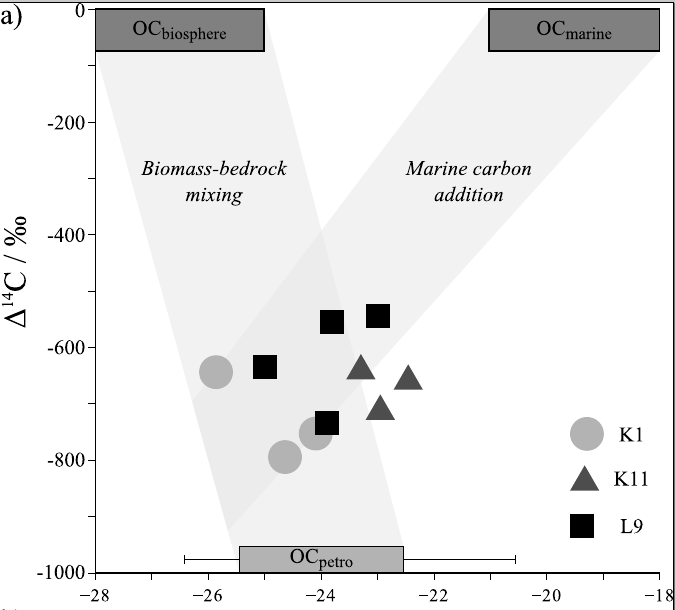I have recently had a paper accepted in the journal “Marine Geology“, which looks the transport of organic carbon during a major typhoon in Taiwan: “Redistribution of multi-phase particulate organic carbon in a marine shelf and canyon system during an exceptional river flood: Effects of Typhoon Morakot on the Gaoping River–Canyon system”.
Typhoon Morakot was a particularly severe tropical cyclone that hit the island in 2009, causing flooding, mudslides and hundreds of deaths. From an organic geochemistry perspective, it also transported sediment and organic carbon from the hillsides and floodplains out to the South China Sea. Some of this carbon was “fresh” material, coming from trees, grass, shrubs and soil. Other parts of the carbon was “fossil” carbon, sourced from the mountains running down the centre of the island, or from sedimentary rocks in the foothills and floodplains. It is important for the global carbon cycle to understand how much of the land-sourced (terrestrial) carbon makes it to the ocean floor, because this process can lead to carbon being stored in the sediments for millions of years.
Out at sea, all of this organic carbon and sediment was mixed together with material produced in the water column, by algae and plankton. Mixing three carbon sources together makes it very difficult to work out how much of each one is present in a sample, which is where my work comes in. By combining measurements of the nitrogen to carbon ratio with the carbon-13 to carbon-12 isotope ratio, these three inputs can be identified. I did this for samples collected in the Gaoping Canyon, a deep submarine channel running from the island out to the deep sea. I found that terrestrial organic carbon was the dominant form of carbon present in the canyon and that therefore millions of tonnes of carbon were transported to and buried in the ocean by the typhoon.

This carbon will most likely be locked away in these sediments for thousands or millions of years, while on the island more trees will grow to replace the ones washed away in the storm. In the process, carbon dioxide will be taken out of the atmosphere, so the storm-flood-burial cycle should go some way towards slowing the rate of climate change.
If you would like to download the paper, it is available freely via open access or as a PDF.